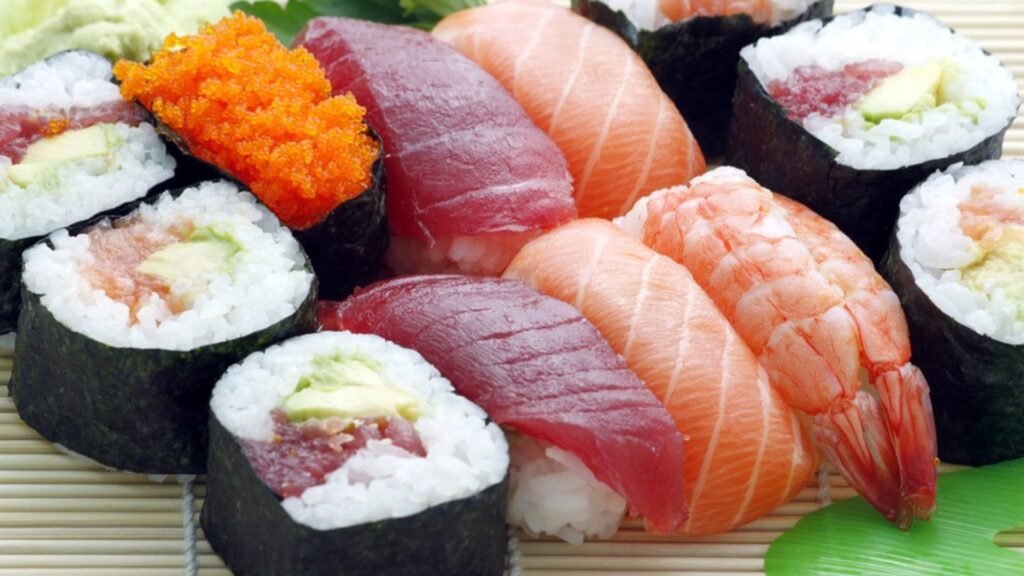The Art of Sushi: A Guide to Japanese Sushi Culture
Sushi, a cornerstone of Japanese cuisine, is much more than a meal—it’s an art form deeply rooted in Japanese culture. This guide will explore the history, types, and cultural significance of sushi, offering insights into this beloved culinary tradition.

The History of Sushi
Origins and Evolution Sushi’s origins trace back to ancient Japan, evolving from a preservation method to a celebrated dish.
- Early Beginnings: Sushi began as a way to preserve fish through fermentation. Known as narezushi, this method used rice to ferment fish, which was then consumed separately.
- Modern Transformation: The sushi we know today, with its fresh fish and vinegared rice, emerged during the Edo period (1603-1868). Tokyo (formerly Edo) played a significant role in this transformation, introducing nigiri sushi.
Types of Sushi
Varieties and Styles Sushi comes in various forms, each with its unique preparation and presentation.
- Nigiri: Hand-formed rice topped with slices of raw fish or seafood. It’s known for its simplicity and balance of flavors.
- Sashimi: Thinly sliced raw fish served without rice. It’s often accompanied by soy sauce, wasabi, and pickled ginger.
- Maki: Rolled sushi made with rice and fillings wrapped in seaweed. Popular types include California rolls and spicy tuna rolls.
- Temaki: Cone-shaped sushi rolls filled with rice, fish, and vegetables, designed to be eaten with hands.
The Craft of Sushi Making
Precision and Skill Making sushi is a refined skill that requires practice and dedication.
- Rice Preparation: Sushi rice, seasoned with a mixture of rice vinegar, sugar, and salt, must be cooked to perfection. The rice’s texture and seasoning are crucial for authentic sushi.
- Fish Selection: Freshness is key. Sushi chefs select high-quality fish and seafood, often from trusted suppliers. The preparation involves precise slicing to enhance the texture and flavor.
- Presentation: Sushi is not only about taste but also about visual appeal. Chefs meticulously arrange sushi to ensure an aesthetically pleasing presentation.
Sushi Dining Etiquette
Proper Practices Understanding sushi dining etiquette enhances the overall experience.
- Chopsticks and Hands: Nigiri and sashimi can be eaten with chopsticks or fingers. However, it’s customary to use chopsticks for sashimi and hands for nigiri.
- Soy Sauce Usage: Dip the fish side of nigiri into soy sauce, not the rice, to avoid overwhelming the delicate flavors. Use wasabi sparingly.
- Ginger and Pairings: Pickled ginger cleanses the palate between different types of sushi. It should not be used as a topping on sushi.
Sushi Culture and Traditions
Cultural Significance Sushi is more than a meal; it’s a reflection of Japanese culture and hospitality.
- Omakase Experience: Omakase, meaning “I’ll leave it to you,” is a dining experience where the chef selects dishes based on seasonal ingredients and the diner’s preferences.
- Sushi Bars: Traditional sushi bars (sushiya) offer an intimate setting where diners can interact with chefs and enjoy a personalized dining experience.
- Festive Occasions: Sushi is often served during special occasions and celebrations, symbolizing good fortune and prosperity.
Conclusion
The art of sushi encompasses a rich history, diverse types, and meticulous craftsmanship. As a symbol of Japanese culture, sushi reflects the values of precision, quality, and aesthetic appreciation. Whether you’re a sushi enthusiast or new to this culinary art, understanding the nuances of sushi enhances your appreciation and enjoyment of this timeless Japanese tradition.



